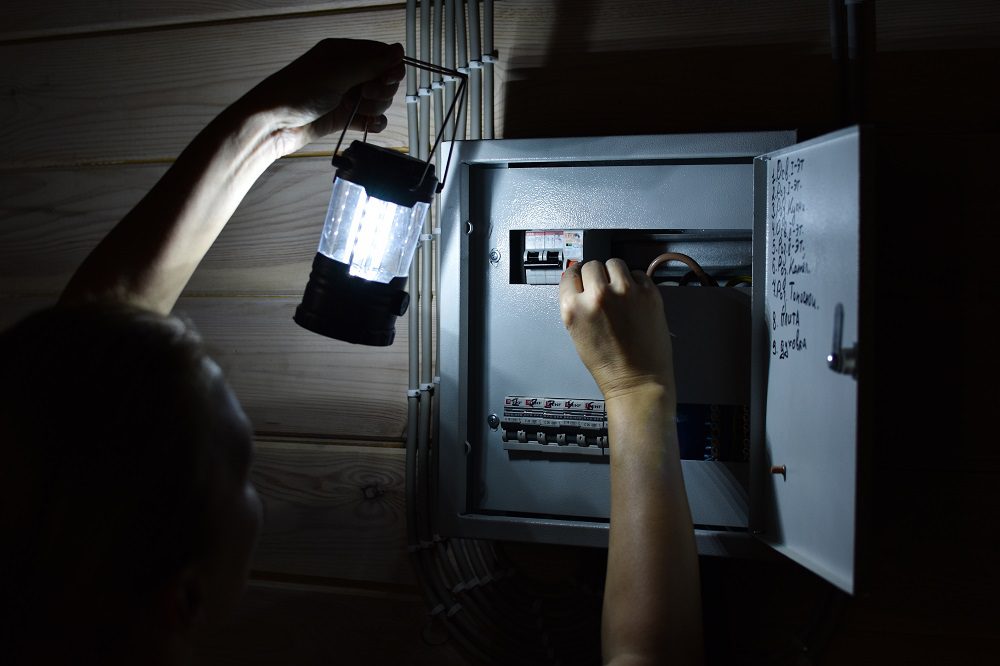
From Service Calls to Outlet Swaps: Electrical Repair Costs and Choosing the Right Pro
Homeowners in Charlotte tend to call an electrician for the same handful of problems: tripping breakers, dead outlets, flickering lights, sparking switches, or a mystery burning smell near a panel. The issue feels urgent, yet pricing can feel hazy. This article lays out what typically drives cost for an electrical repair service, what a fair visit looks like in the Charlotte, NC area, and how to select the right pro for small fixes and bigger safety concerns.
What a service call actually covers
A standard service call is the foundation of most jobs. It pays for a licensed electrician to arrive, diagnose safely, and perform small fixes on the spot. That visit price often includes the first block of labor time and basic materials, then shifts to an hourly rate if the work extends.
In Charlotte and nearby neighborhoods like South End, Dilworth, Plaza Midwood, and Ballantyne, reputable companies tend to use flat-rate pricing for common tasks. That protects homeowners from surprise add-ons and keeps scope clear. Good companies also stock their vans with common parts: outlets, GFCIs, dimmers, breakers, pigtails, wirenuts, and plates. If a tech has to leave for a part, it can add time and cost, so stocked vans matter.
Typical price ranges in Charlotte
Prices vary with building age, access, and scope, but these local ranges are common for single-family homes and townhomes:
Service call and diagnosis. Many Charlotte electricians charge a flat fee that covers travel and up to the first hour of troubleshooting. Expect a range that reflects company quality, licensing, and insurance.
Standard outlet replacement. A simple swap of a worn duplex outlet often falls into a modest flat rate when it’s straightforward and in good condition. Costs rise if the box is loose, the wiring is backstabbed and overheated, or aluminum wiring is present.
GFCI outlet installation. Kitchens, bathrooms, laundry areas, garages, and exterior receptacles need GFCI protection. If wiring and box depth are suitable, it’s a direct install. Tight metal boxes, no ground, or daisy-chained loads can add steps.
Light switch replacement or dimmer install. A basic single-pole switch is quick. Three-way switches or smart dimmers take more time. LED compatibility is a common hiccup and can require a different dimmer model.
Breaker replacement. Swapping a weak or nuisance-tripping breaker is simple if the panel supports the correct breaker type. Older panels like certain Federal Pacific or Zinsco units require panel-specific parts or panel upgrades. Work inside the panel demands extra caution and may involve permit requirements.

Ceiling fan replacement. Fan swaps range with ceiling height, bracing, and control method. If there’s no fan-rated box in the ceiling, one must be installed. Sloped ceilings and tall stairwells add time and equipment.
The age of the home matters across these tasks. Homes in Myers Park and Elizabeth often have older wiring methods, tighter boxes, and mixed upgrades. Newer builds in Steele Creek or Berewick may be cleaner to service, but smart switches and multi-gang boxes can still slow setup and testing.
What drives cost up or down
Three factors control most repair pricing: access, condition, and safety.
Access is about how easy it is to reach the work. Tight attic crawls, finished basements with no access panels, stacked stone exteriors, or 20-foot ceilings mean ladders, helpers, and extra time. Exterior outlets behind shrubs and fences slow even a simple GFCI swap.
Condition refers to the wiring and device state. Heat-damaged insulation, backstabbed receptacles, corroded terminations, and loose neutral connections require remediation before any new device can be safely installed. That might mean pigtailing wires, replacing the box, or extending conductors.
Safety dictates process. Any hint of overheating, arcing, or moisture triggers a broader inspection. If a panel shows signs of scorching or double-lugged neutrals, a conscientious electrician will recommend corrective work before moving on.
When a quick fix isn’t enough
Some calls start as “a dead outlet” and turn into a small project because the root cause isn’t the device. Examples from real Charlotte homes:
-
Half the kitchen goes out when one GFCI trips. The fix may be reconfiguring downstream loads so one failed device doesn’t darken the whole space. That can require tracing circuits and labeling.
-
A hallway light flickers after storms. Loose neutrals in a multi-wire branch circuit can cause intermittent flicker across several rooms. Identifying the shared neutral and repairing splices is slower than swapping a switch.
-
A dryer outlet overheats. The receptacle may be fine, but the cable lugs at the breaker could be loose or the aluminum conductors are oxidized. The solution includes cleaning, antioxidant compound, and torque to spec, not just a new receptacle.
-
GFCI won’t reset outside. Often water has entered the in-use cover or the box lacks proper drainage. Correction may involve a new bubble cover, a listed weather-resistant GFCI, and resealing penetrations.
Good electricians explain these pivots before proceeding and present options so the homeowner can choose scope and budget.
Small repairs worth doing early
Electrical issues rarely improve by themselves. Small symptoms often point to a weak connection that will heat under load. Prompt service prevents larger damage and keeps costs lean.
-
Warm faceplates, a faint buzz, or a burning odor near a device or panel calls for immediate attention.
-
Breakers that trip more than once a month on normal use should be checked. Habitual resets without diagnosis mask real overloads or failing breakers.
-
Lights that dim when the microwave or hair dryer starts may indicate voltage drop or a shared neutral problem. Catch it before it stresses appliances.
Panel and code realities in Charlotte
The Charlotte-Mecklenburg area follows the North Carolina Electrical Code, based on the NEC with state amendments. Permits are typically required for service upgrades, new circuits, and panel replacements. Many small repairs, like device replacements or simple like-for-like swaps, do not need a permit, but anything inside the panel or that changes circuit capacity may.

Older panels common in Charlotte’s mid-century neighborhoods present unique issues. Some manufacturers have known breaker seating and trip reliability problems. In those cases, replacing a single breaker may not be the best use of money. A licensed electrician should explain the repair-versus-replace choice with clear pricing for both paths.
Picking the right electrician for the job
Electrical repair service work runs on speed, safety, and clear communication. Homeowners can judge fit with a few direct questions. Ask if same-day appointments are available in your neighborhood. Ask what their service-call fee covers and electrical repair Charlotte NC how they handle parts on the truck versus special orders. Confirm license and insurance. Request a written scope with a firm price before work begins.
Local familiarity counts. An electrician who works SouthPark condos every week knows HOA rules, elevator access timing, and parking realities. A team that lives in North Charlotte will know which older homes often hide knob-and-tube splices and how to navigate tight attics without damaging plaster.
What a professional diagnosis looks like
A careful tech starts with the symptom, then verifies at the source. For a dead outlet, that means testing at the receptacle, checking line versus load, then tracing upstream devices that might feed it. For a tripping breaker, the tech measures load current, inspects for shorts or ground faults, and confirms breaker type and rating. The best electricians test before and after, label updated circuits, and document findings in clear language.
Expect them to use a non-contact tester for a quick safety check, then a multimeter for actual readings. On GFCI and AFCI circuits, they may use a plug-in tester to verify trip and reset. On aluminum branch circuits, they should use devices rated CO/ALR or recommend approved pigtailing methods.
Real-world time estimates
Time on site depends on surprises. With good access and no hidden damage, these are fair expectations:
-
Standard outlet swap: about 20 to 40 minutes for one, less per outlet when doing several in the same room.
-
GFCI install: 30 to 60 minutes, longer if it protects downstream loads and needs mapping.
-
Light switch or dimmer: 20 to 45 minutes; three-ways and smart dimmers can push it to an hour.
-
Breaker replacement: 30 to 60 minutes if the panel is in good shape and the correct breaker is available.
-
Ceiling fan replacement: 60 to 120 minutes, depending on bracing and height.
If a job runs longer than expected, the tech should explain the cause in plain terms and present options.
How Ewing Electric Co. approaches repairs
Ewing Electric Co. serves Charlotte and nearby areas, including NoDa, University City, Matthews, Pineville, and Huntersville. The team focuses on same-day electrical repair service for safety issues, fast communication, and clean, code-compliant work. Vans carry common devices, including tamper-resistant receptacles, WR-rated GFCIs for outdoor use, LED-compatible dimmers, and standard breakers for major panel brands.
The company quotes clear service-call pricing upfront. Simple fixes are completed during the diagnostic window. If the job expands, the tech explains why and provides a firm price before continuing. Photos and labeled panels are part of the closeout so the homeowner understands what changed.
A recent example: a Dilworth homeowner reported a GFCI that kept tripping in light rain. The tech found a hairline crack in the in-use cover that let water drip down the cable into the box. The repair included a WR-rated GFCI, a new bubble cover with gasket, and resealed siding penetrations. The circuit tested stable after a hose test, and the price stayed within the quoted range because parts were on the truck.
Preventive steps that save money
A few habits reduce emergency calls:
-
Press the “test” and “reset” on GFCIs and AFCIs twice a year, for example when changing HVAC filters.
-
Replace discolored or loose outlets before they heat under load.
-
Label each breaker with room names. It speeds diagnosis and reduces labor during future service.

-
Keep vegetation and mulch clear of exterior receptacles and meter bases.
-
Photograph your panel interior after any changes. It helps future techs spot what’s new.
When to call today
If there is a burning smell, sparks, or warmth at a device or panel, schedule a same-day visit. Repeated breaker trips, dead outlets in kitchens or bathrooms, or exterior outlets that hold moisture also warrant prompt service. If buying or selling a home in Charlotte, a quick repair walk-through can clean up flagged items from inspection reports before closing.
Ewing Electric Co. is ready to help across Charlotte, whether it’s an outlet swap in Plaza Midwood, a breaker issue in Ballantyne, or a GFCI problem in South End. Call or request service online for fast, clear pricing and a repair done right.
Ewing Electric Co provides dependable residential and commercial electrical services in Charlotte, NC. Family-owned for over 35 years, we handle electrical panel upgrades, EV charger installation, generator installation, whole-home rewiring, and 24/7 emergency repairs. Our licensed electricians deliver code-compliant, energy-efficient solutions with honest pricing and careful workmanship. From quick home fixes to full commercial installations, we’re known for reliable service done right the first time. Proudly serving Charlotte, Matthews, Mint Hill, and nearby communities. Ewing Electric Co
7316 Wallace Rd STE D Phone: (704) 804-3320 Website:
https://ewingelectricco.com/ |
Google Site
Social:
Facebook |
Instagram |
Twitter
Map: View on Google Maps
Charlotte,
NC
28212,
USA